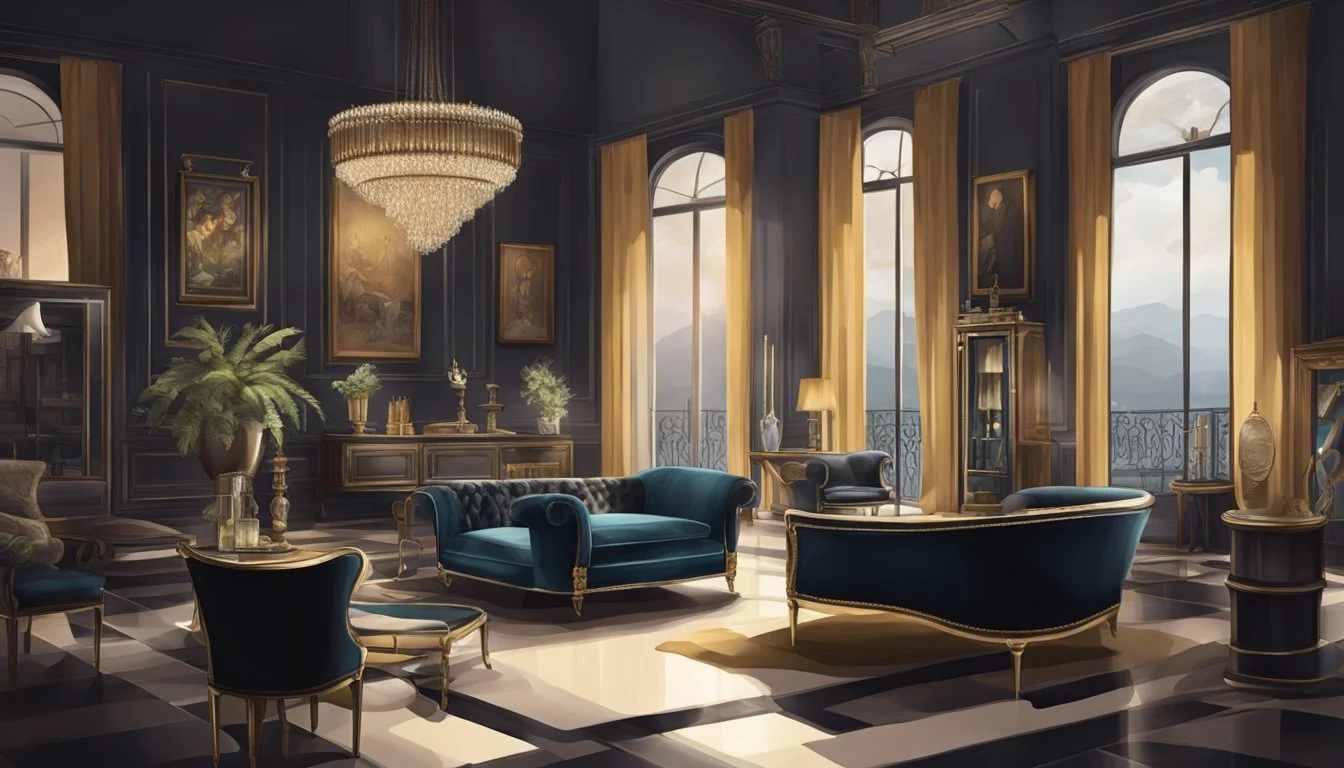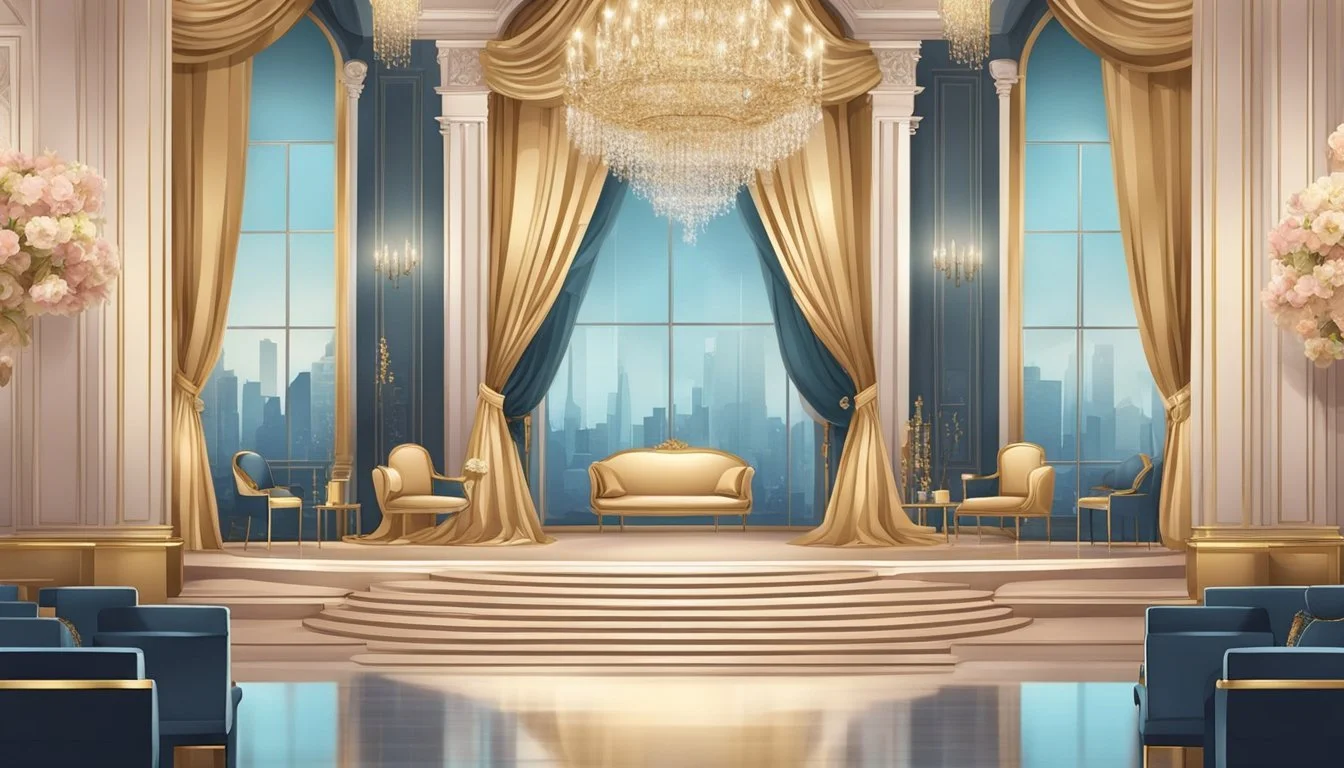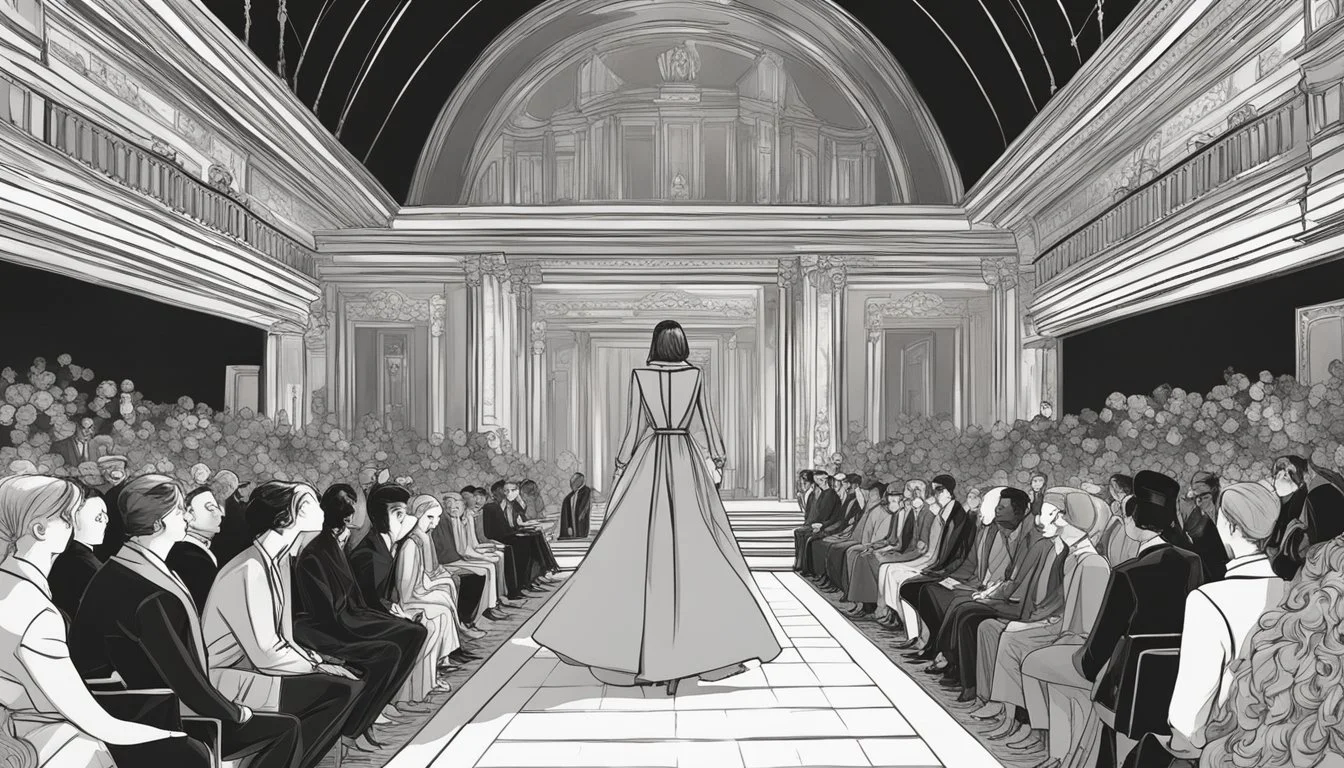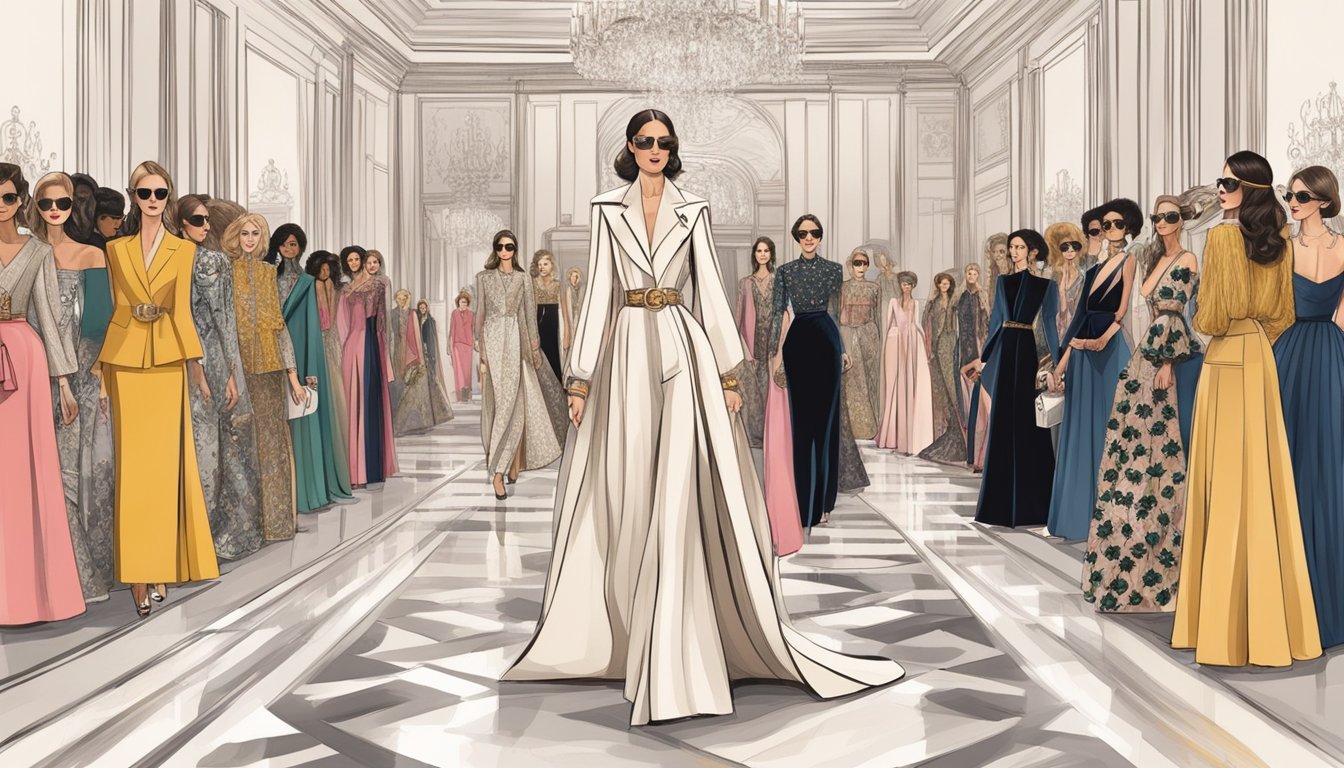Fashion and Murder: The True Scandal of 'House of Gucci'
A Stylish Tale of Revenge and Betrayal
The glamorous world of high fashion met shocking violence in one of Italy's most notorious crimes. In 1995, Maurizio Gucci, heir to the iconic Gucci fashion empire, was gunned down outside his Milan office. The murder sent shockwaves through Italian society and the global fashion industry.
Investigators soon uncovered a sinister plot orchestrated by Gucci's ex-wife, Patrizia Reggiani. Dubbed the "Black Widow" by the press, Reggiani was convicted of hiring hitmen to kill her former husband. Her motives blended jealousy, greed, and a desire for control over the Gucci brand.
This sensational true crime story inspired the 2021 film "House of Gucci" starring Lady Gaga as Patrizia Reggiani. The movie dramatizes the tumultuous relationship between Patrizia and Maurizio, from their whirlwind romance to bitter divorce and ultimately murder. It offers a glimpse into the cutthroat world of luxury fashion and the dark underbelly of wealth and power.
The Rise of the Gucci Empire
The Gucci empire's ascent from a small leather goods shop to a global luxury powerhouse is marked by innovation, family dynamics, and a keen understanding of the fashion industry. This remarkable journey spans decades of creative vision and business acumen.
Founding and Expansion
Guccio Gucci founded the company in Florence, Italy in 1921. He started with a single leather goods store, drawing inspiration from the luxury luggage he observed while working at the Savoy Hotel in London.
Gucci's initial focus was on high-quality travel bags and equestrian equipment. The brand quickly gained popularity among wealthy travelers and the local aristocracy.
In the 1930s and 1940s, Gucci expanded its product range to include wallets, shoes, and the iconic bamboo handle handbag. This diversification proved crucial for the company's growth.
Fashion as Art and Commerce
Gucci's transformation into a fashion powerhouse accelerated in the 1950s and 1960s. The brand became synonymous with Italian craftsmanship and elegance.
Aldo Gucci, Guccio's son, played a pivotal role in this period. He introduced the iconic Gucci loafer with a horsebit detail in 1953, which became an instant classic.
The brand's distinctive elements, such as the green-red-green stripe and the double-G logo, were developed during this era. These symbols became powerful marketing tools, enhancing Gucci's global recognition.
The Gucci Family and Power Dynamics
As the business grew, so did the involvement of the Gucci family members. Aldo, Rodolfo, and Vasco Gucci, sons of the founder, each played significant roles in the company's expansion.
Aldo spearheaded international growth, opening the first Gucci store in New York in 1953. This move marked the beginning of Gucci's global presence.
However, family tensions began to surface as the business became more complex. Disagreements over control and direction of the company emerged between different branches of the family.
Paolo Gucci, Aldo's son, had creative differences with his father and uncles, leading to internal conflicts that would later impact the company's stability.
Maurizio Gucci's Leadership
Maurizio Gucci's tenure at the helm of the iconic fashion house was marked by ambitious plans and significant challenges. His leadership style and business decisions had a profound impact on the company's direction during a turbulent period.
Taking the Reins
Maurizio Gucci assumed control of the family business in 1983 after inheriting his father Rodolfo's 50% stake. He quickly set out to modernize the brand and expand its global reach. Maurizio's vision included updating Gucci's product lines and revamping its image to appeal to a younger, more fashion-forward clientele.
He recruited talented designer Dawn Mello to revitalize the brand's offerings. Maurizio also focused on reducing the number of Gucci products to maintain exclusivity. His leadership style was characterized by bold moves and a desire to break from traditional family management practices.
Financial Challenges and Strategies
Despite his grand plans, Maurizio faced significant financial hurdles. The company's profitability had declined, and debts were mounting. To address these issues, he implemented cost-cutting measures and sought external investment.
In 1988, Maurizio sold 47.8% of Gucci to Investcorp, a Bahrain-based investment firm. This move provided much-needed capital but also signaled a shift away from family control. Maurizio struggled to balance growth ambitions with financial realities.
He brought in Domenico De Sole as CEO to help stabilize the company. However, mounting losses and disagreements with the board led to Maurizio's eventual ouster in 1993, when he sold his remaining shares to Investcorp.
Struggles of Power and Influence
The Gucci family's rise to prominence was marked by intense conflicts over control and wealth. Rivalries and betrayals shaped the company's trajectory as different factions fought to assert dominance.
Family Disputes and Resentment
Rodolfo and Aldo Gucci's relationship deteriorated as they disagreed on the company's direction. Aldo favored expansion, while Rodolfo preferred exclusivity. This rift extended to the next generation.
Paolo Gucci, Aldo's son, felt stifled by his father's leadership. He attempted to launch his own line, leading to bitter lawsuits within the family. The company suffered as internal struggles overshadowed business operations.
Maurizio Gucci, Rodolfo's son, found himself at odds with his uncle and cousins. He sought greater control, resulting in further fragmentation of family alliances.
The Shift in the Gucci Dynasty
Maurizio's ascent to power marked a turning point. He outmaneuvered his relatives, eventually gaining majority ownership of the company in 1983.
His leadership style alienated family members and longtime employees. Maurizio's ambitious plans and lavish spending strained the company's finances.
Mounting debts and mismanagement forced Maurizio to sell his shares to Investcorp in 1993. This ended the Gucci family's control over the fashion house they had built.
The transfer of ownership to outside investors signaled the end of an era. It also set the stage for the tragic events that would follow, as personal resentments festered in the wake of lost influence and wealth.
Maurizio Gucci and Patrizia Reggiani: A Tumultuous Marriage
The union of Maurizio Gucci and Patrizia Reggiani was marked by passion, luxury, and ultimately, tragedy. Their relationship began with a whirlwind romance and ended in divorce, setting the stage for one of fashion's most notorious scandals.
Courtship and Marriage
Maurizio Gucci and Patrizia Reggiani met at a party in 1970. Both in their early 20s, they were instantly drawn to each other. Reggiani, a striking socialite, captivated the Gucci heir with her charm and ambition.
Their courtship was swift and intense. Despite opposition from Maurizio's father, who saw Patrizia as a social climber, the couple married in 1972. The wedding was a lavish affair, befitting the union of a fashion dynasty heir and his glamorous bride.
Lifestyle and Public Image
As newlyweds, Maurizio and Patrizia embraced a life of luxury. They became fixtures in high society, known for their extravagant parties and jet-setting lifestyle. Patrizia, dubbed "Lady Gucci" by the press, reveled in her role as a fashion icon.
The couple had two daughters and seemed to have it all. They divided their time between Milan, New York, and their luxury yacht. Patrizia was known for her expensive tastes, once famously stating, "I'd rather cry in a Rolls-Royce than be happy on a bicycle."
Divorce and Aftermath
By the mid-1980s, cracks began to show in their marriage. Maurizio left Patrizia in 1985, claiming a short business trip. He never returned home. The separation was acrimonious, with Patrizia fiercely opposed to the divorce.
Their split became final in 1991, leaving Patrizia bitter and resentful. She felt betrayed, especially when Maurizio began a relationship with Paola Franchi. The divorce settlement granted Patrizia an annual alimony of $1.47 million.
Tensions escalated when Maurizio planned to remarry. Patrizia openly expressed her anger, telling friends she wanted him dead. This animosity would later play a crucial role in the tragic events that followed.
The Murder That Shocked Milan
On March 27, 1995, a shocking crime rocked Milan's fashion world. Maurizio Gucci, heir to the Gucci empire, was gunned down in broad daylight, setting off a sensational investigation that would captivate Italy for years to come.
The Assassination of Maurizio Gucci
Maurizio Gucci arrived at his office building on Via Palestro 20 just before 8:30 AM. As he climbed the steps, a well-dressed man approached and fired three shots, killing Gucci instantly. The gunman also wounded the doorman, Giuseppe Onorato, before fleeing the scene.
Gucci was 46 years old at the time of his death. He had recently sold his remaining stake in the family business after years of turmoil and infighting. The brazen nature of the killing in Milan's fashion district sent shockwaves through Italian society.
Immediate Suspicions and Controversy
Police quickly focused their investigation on Gucci's ex-wife, Patrizia Reggiani. The couple had divorced acrimoniously in 1991 after Maurizio left her for a younger woman. Reggiani made no secret of her bitterness, telling friends she wanted Gucci dead.
Investigators uncovered a complex plot involving Reggiani's psychic advisor Pina Auriemma and three hired killers: Ivano Savioni, Orazio Cicala, and the hitman Benedetto Ceraulo. The case became a media sensation, with Reggiani dubbed the "Black Widow" by the press.
The murder trial captivated Italy. Prosecutors painted a picture of a scorned woman driven by greed and jealousy to orchestrate her ex-husband's killing. After a lengthy legal process, Reggiani and her co-conspirators were convicted in 1998.
The Trial of Patrizia Reggiani
Patrizia Reggiani's trial for the murder of Maurizio Gucci captivated Italy and the world. The sensational case exposed a tale of wealth, betrayal, and cold-blooded revenge within one of fashion's most prominent families.
The Investigation and Arrest
On March 27, 1995, Maurizio Gucci was gunned down outside his Milan office. The investigation initially struggled to find leads. However, an anonymous tip eventually led police to Patrizia Reggiani.
Reggiani was arrested in January 1997, nearly two years after the murder. Prosecutors alleged she had hired hitmen to kill her ex-husband. They pointed to her openly expressed hatred for Maurizio and fears of losing her lavish lifestyle as motives.
The arrest of Pina Auriemma, Reggiani's psychic and confidante, proved crucial. Auriemma confessed to helping arrange the murder and implicated Reggiani as the mastermind.
Media Circus and Public Fascination
The trial began in 1998, quickly becoming a media spectacle. Italian press dubbed Reggiani "The Black Widow" and scrutinized every detail of her life and appearance.
Courtroom proceedings revealed sordid details of the Gucci family's internal conflicts and Reggiani's obsession with her ex-husband. Her flamboyant behavior and unrepentant attitude fueled public fascination.
Testimony from the hired hitmen and recorded phone conversations provided damning evidence. Reggiani's own words, including "It's better to cry in a Rolls-Royce than be happy on a bicycle," became infamous soundbites.
Sentencing and the Aftermath
On November 3, 1998, the court found Patrizia Reggiani guilty of orchestrating Maurizio Gucci's murder. She received a 29-year prison sentence, later reduced to 26 years on appeal.
Reggiani's accomplices also faced justice:
Pina Auriemma: 25 years
Hitman Benedetto Ceraulo: life sentence
Getaway driver Orazio Cicala: 29 years
Reggiani served 18 years before being released on parole in 2016. She maintained her innocence throughout her incarceration, claiming she was set up by Auriemma.
The case continues to intrigue the public, inspiring books, documentaries, and films about the scandalous downfall of the Gucci empire's heir.
The Gucci Brand Post-Scandal
The Gucci brand demonstrated remarkable resilience following the shocking murder scandal. It underwent significant corporate restructuring and expanded its presence in the modern fashion landscape.
Corporate Turnarounds and Brand Resilience
Gucci faced a critical period after Maurizio Gucci's murder in 1995. The brand's reputation was at stake, but swift action helped maintain its position in the luxury market. Domenico De Sole and Tom Ford played pivotal roles in this turnaround.
De Sole, as CEO, focused on financial restructuring and brand management. Ford, as creative director, revitalized Gucci's image with provocative designs and marketing campaigns.
Their efforts paid off. By 1999, Gucci's value had increased significantly, attracting attention from luxury conglomerates. This led to a high-profile takeover battle, ultimately won by François Pinault's PPR (now Kering).
Expansion into the Modern Fashion World
Under Kering's ownership, Gucci continued to evolve. The brand embraced digital marketing and e-commerce, reaching younger consumers. Alessandro Michele's appointment as creative director in 2015 marked a new era.
Michele's eclectic, gender-fluid designs resonated with millennials and Gen Z. Gucci's fashion shows became highly anticipated events in the industry calendar.
The brand expanded its product lines, venturing into home decor and beauty. Collaborations with artists and other brands kept Gucci relevant and desirable.
Gucci also focused on sustainability initiatives, aligning with modern consumers' values. By 2021, the brand had solidified its position as a leading luxury fashion house, proving its ability to overcome past scandals and adapt to changing market demands.
House of Gucci: Cultural Impact and Cinematic Representation
Ridley Scott's "House of Gucci" brought the scandalous true story of the Gucci family to the big screen, captivating audiences worldwide. The film's star-studded cast and dramatic portrayal of fashion, luxury, and murder sparked renewed interest in the real-life events.
The Literary and Film Adaptations
Sara Gay Forden's book "The House of Gucci" served as the source material for Scott's film. The 2001 non-fiction work provided a detailed account of the Gucci family's rise, fall, and the shocking murder that shook the fashion world.
Ridley Scott's adaptation starred Lady Gaga as Patrizia Reggiani and Adam Driver as Maurizio Gucci. The film also featured Jared Leto, Al Pacino, and Jeremy Irons in supporting roles.
The movie's lavish production design and costumes brought 1970s and 1980s Italy to life, showcasing the opulent world of high fashion.
Critical Reception and Performances
"House of Gucci" received mixed reviews from critics. Many praised the performances, particularly Lady Gaga's portrayal of Patrizia Reggiani.
Gaga's transformation into the ambitious and ultimately murderous Patrizia earned her widespread acclaim. Her performance garnered nominations for several awards, including a Best Actress nod at the BAFTAs.
The film's blend of true crime and fashion drama resonated with audiences. It grossed over $150 million worldwide, despite competition from other high-profile releases.
Critics noted the film's tonal shifts between drama and camp, with some finding it uneven. Others praised Scott's direction and the cast's commitment to their roles.
Legacy and Lessons Learned
The Gucci saga left an indelible mark on Italian society and legal system. It sparked debates about wealth, power, and morality that continue to resonate today.
Impact on Italian Law and Society
The Gucci murder case exposed flaws in Italy's legal system. It led to reforms in witness protection programs and stricter penalties for premeditated murder. The trial's high profile nature increased public scrutiny of the justice process.
Inheritance tax laws came under review following disputes over the Gucci fortune. This prompted discussions about wealth transfer and family-owned businesses in Italy.
The case also influenced public perception of luxury brands. It highlighted the dark side of wealth and power in the fashion industry.
Reflections on Wealth, Power, and Morality
The Gucci scandal forced a reexamination of values in Italian high society. It revealed how greed and ambition can corrupt even the most prestigious families.
The fall of Patrizia Reggiani served as a cautionary tale. Her actions demonstrated the dangers of unchecked materialism and obsession with status.
The Gucci family's internal conflicts raised questions about legacy preservation. It showed how family businesses can be vulnerable to personal vendettas and power struggles.
The saga underscored the importance of ethical leadership in the luxury goods sector. It prompted many Italian fashion houses to reassess their governance structures and values.






